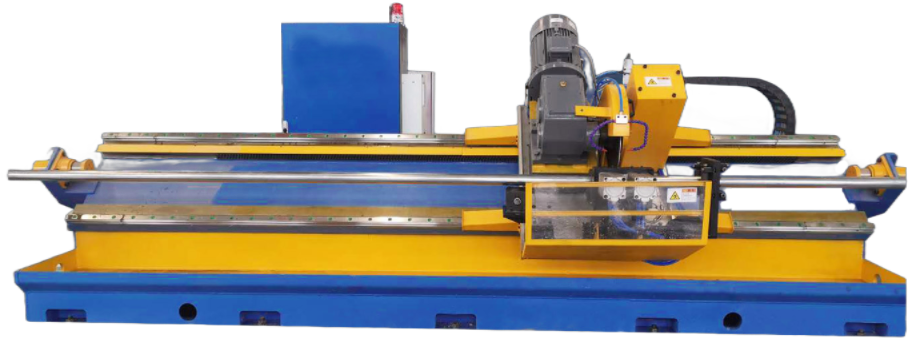plastic pipe production line
The Plastic Pipe Production Line A Comprehensive Overview
Plastic pipes have revolutionized various industries, including construction, agriculture, and water management. As a result, the demand for high-quality plastic pipes continues to grow, making the efficiency and technology of plastic pipe production lines ever more critical. This article explores the key components, processes, and advancements in plastic pipe production lines, shedding light on their importance in today’s economy.
Understanding Plastic Pipe Production Lines
A plastic pipe production line is a systematic setup designed to manufacture plastic pipes from raw materials, primarily thermoplastics like polypropylene (PP), polyethylene (PE), and polyvinyl chloride (PVC). These materials are chosen for their durability, resistance to corrosive environments, and lightweight nature, which ensure ease of transport and installation.
The production line typically consists of several key stages material preparation, extrusion, calibration, cooling, cutting, and finally, packaging.
Key Components of the Production Line
1. Material Preparation The production process begins with the selection and preparation of raw materials. Often, these materials are granulated and mixed with additives such as stabilizers and colorants to enhance their properties. This stage is critical as the quality of the raw materials directly influences the final product.
2. Extrusion The prepared granules are fed into the extruder, where they are melted and transformed into a continuous pipe form. The extruder comprises a screw that pushes the material through a heated barrel. The temperature and pressure must be meticulously controlled to ensure uniform melting and proper flow of the plastic.
3. Molding and Calibration After the extrusion process, the molten plastic enters a calibration unit, where it is shaped into the desired diameter and wall thickness. This unit often uses a vacuum or pressure system to ensure the pipe maintains its shape and dimensions during the cooling process.
4. Cooling Following calibration, the pipes must be cooled uniformly to solidify the plastic. Cooling can be achieved through water baths or air cooling systems. Proper cooling is crucial to prevent warping and ensure the pipes meet the required strength specifications.
plastic pipe production line

5. Cutting Once cooled, the pipes are cut into specific lengths according to customer requirements or industry standards. Automated cutting machines allow for precise measurements and consistent quality, which is vital for large-scale production.
6. Inspection and Testing Before packaging, the pipes undergo rigorous quality control inspections and tests to check for defects, strength, and compliance with industry standards. This stage is essential to ensure that the pipes are fit for their intended applications.
7. Packaging Finally, the finished pipes are bundled and packed for shipment. Efficient packaging not only protects the product during transportation but also enhances the overall branding and presentation for customers.
Technological Advancements in Plastic Pipe Production
In recent years, there has been a significant push towards automation and the integration of advanced technologies in plastic pipe production. Computer Numerical Control (CNC) systems are increasingly being used for accurate cutting and calibration processes. Additionally, Industry 4.0 principles, including data analytics and IoT connectivity, are helping manufacturers monitor production efficiency and maintain high-quality standards in real-time.
The introduction of eco-friendly materials and recycling processes has also gained momentum. Many manufacturers are now focusing on producing biodegradable plastic pipes or utilizing recycled plastics, which not only meet regulatory requirements but also align with growing environmental awareness among consumers.
Another notable advancement is the use of simulation software during the design phase, which allows manufacturers to predict potential issues in the production process, optimize material usage, and reduce waste.
Conclusion
As the demand for plastic pipes continues to rise, the importance of efficient and technologically advanced production lines cannot be overstated. The evolution of plastic pipe production lines is a testament to the industry’s commitment to quality, sustainability, and innovation. By embracing new technologies and practices, manufacturers can better meet the increasing needs of their clients while contributing to a more sustainable future. The plastic pipe industry, supported by its production lines, plays a crucial role in shaping infrastructures across the globe, making it an essential component of modern society.
-
High Frequency Straight Seam Welded Pipe Production Line-BzZhou Xinghua Machinery Equipment Manufacturing Co., LTD.|line pipe steel&welded gas pipeNewsJul.30,2025
-
High Frequency Straight Seam Welded Pipe Production Line-BzZhou Xinghua Machinery Equipment Manufacturing Co., LTD.|High Precision&Automated SolutionsNewsJul.30,2025
-
High Frequency Straight Seam Welded Pipe Production Line - BzZhou Xinghua Machinery Equipment Manufacturing Co., Ltd.NewsJul.30,2025
-
High Frequency Straight Seam Welded Pipe Production Line-BzZhou Xinghua Machinery Equipment Manufacturing Co., LTD.|Precision Welding, High EfficiencyNewsJul.30,2025
-
High Frequency Straight Seam Welded Pipe Production Line|BzZhou Xinghua|Precision Welding&EfficiencyNewsJul.30,2025
-
High Frequency Straight Seam Welded Pipe Production Line - BzZhou Xinghua|Precision Engineering&EfficiencyNewsJul.30,2025


